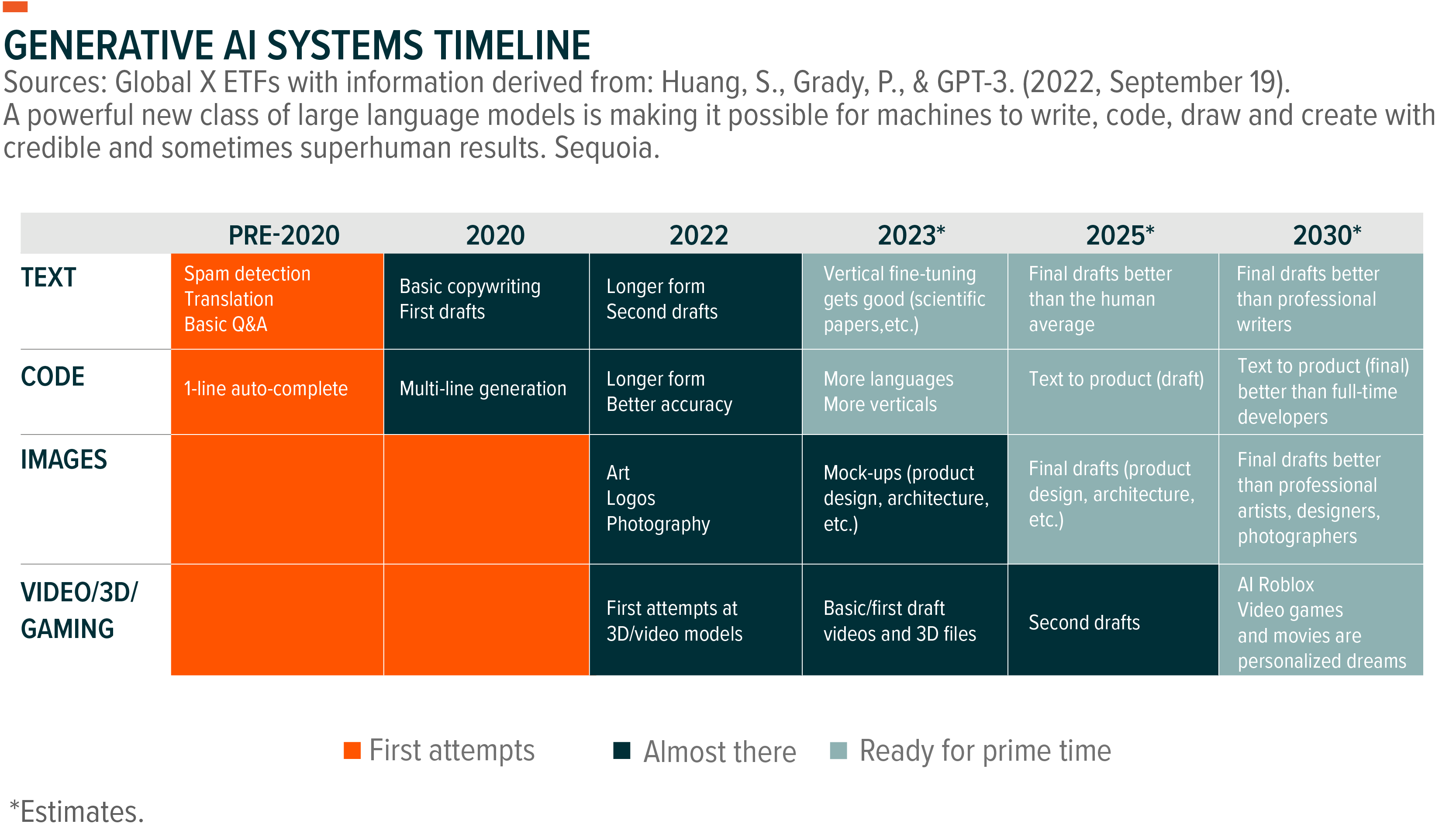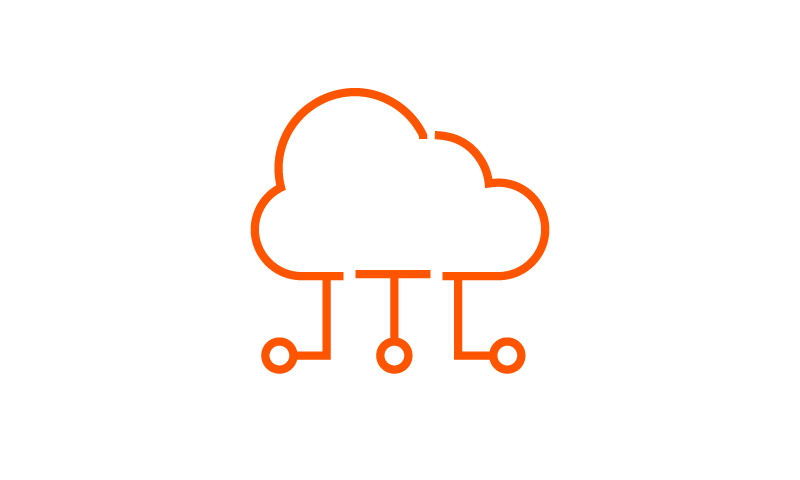Generating Content and Profits: Examining the Potential Business Models of Generative AI
PreviewGenerative artificial intelligence (AI) has the potential to transform many industries and revolutionize the way we live and work. As this technology continues to evolve and mature, there are many different business models that are emerging to take advantage of its capabilities. In this piece, we will explore what we believe are the three of the most important business models for generative AI: model-as-a-service, built-in apps, and vertical integration.
This piece is part of our Generative AI series of research. To access all our research on the topic, click here.
Key Takeaways
- Model as a Service (MaaS) offers low-cost, low-risk access to generative AI, with limited upfront investment and a high degree of flexibility.
- Built-in apps offer highly customizable and specialized solutions with a high degree of scalability.
- Vertical integration leverages existing systems and apps to enhance their offerings with generative AI capabilities.
Generative AI Model-as-a-Service
Model-as-a-Service (MaaS) is one of the most popular business models for generative AI developers. This is what we’re seeing today with OpenAI, which licenses its GPT-3 AI model (the platform behind its popular ChatGPT product) to Microsoft for use in its Bing search engine. OpenAI is also expected to charge consumers $20 a month for a premium version of ChatGPT.1
With MaaS, companies can access generative AI models through the cloud and use them to create new and innovative content. This business model is similar to the subscription-based model that exists today for most software. These subscriptions can be monthly, semi-annual, or annual, creating recurring revenues for the developers offering these services. One of the biggest benefits of MaaS is that it allows companies to access the latest and greatest generative AI models without having to invest in the infrastructure and resources necessary to build these models from scratch. This makes it easier and more cost-effective for companies to leverage generative AI to create new and innovative experiences. Additionally, MaaS offerings, such as OpenAI’s GPT-3 and Google’s BERT, are highly customizable, which allows customers to tailor these models to their specific needs and use cases.
Of note, it’s likely that we’ll eventually see an incremental fee based on the usage of the models. This is similar to what we see today from public cloud providers, or hyperscalers, such as Amazon’s AWS or Microsoft’s Azure. This is known as a pay-as-you-go pricing model, where customers only pay for the services they use. This model is flexible and allows customers to scale their usage up or down based on their needs, and only pay for what they use. It would also allow the model providers to manage their cost structure, as each query run through an AI model has an associated cost, currently estimated to be around two or three cents. OpenAI’s DALL-E platform, a text-to-image AI model, currently implements this type of pricing structure.
For example, companies can use generative AI to build virtual customer service agents that can assist customers with their inquiries or use AI to generate news articles, product descriptions, and marketing content. Some of the most popular MaaS offerings for generative AI include OpenAI’s GPT-3 and Google’s BERT. These platforms can also create original work, such as social media content, video games, computer code, graphic designs, and more. As the models get better, they’re starting to deliver human-level results and, soon enough, they could start delivering superhuman-level outcomes.2

Built-In Apps
Another important business model for generative AI is built-in apps. With this model, companies can build new apps on top of generative AI models to create new and innovative experiences. For example, companies can use generative AI to create unique and engaging gaming experiences or to generate music, art, and other forms of creative expression.
A good example of this use case is Jasper, an AI content platform founded in 2021 that aims to enable growing businesses to leverage AI to scale their content strategies.3 The company has its roots in content creation. Its founders saw what a difference generative AI could make to their customers, allowing them to create and test ad variations quickly and efficiently, in order to discover which insight would have the biggest impact. When given a prompt, the platform automatically selects the best language model suited to the particular use case. The aim is to improve business outputs by adding context, reliable source citations and more current data, among other things.4
Vertical Integration
With a vertical integration business model, companies can leverage generative AI to enhance their existing offerings and create new value for their customers. For example, companies can use generative AI to improve the accuracy and efficiency of their language translation services or analyze large amounts of data and make predictions about stock prices and other financial metrics. By leveraging generative AI to enhance their existing offerings, companies can create new and valuable experiences for their customers and improve their competitiveness in their respective markets.
Search engines are a great example. Generative AI could lead to the development of search engines that can produce more accurate and personalized results for users, rather than relying solely on pre-existing web pages. This is already playing out with Microsoft integrating ChatGPT into Bing, in an attempt to challenge Google’s dominant position in the search market. Google Search forms nearly 60% of the company’s total revenue, which is why Google was quick to respond with announcing plans to launch its own version of ChatGPT and integrate into Google Search. Microsoft on the other hand, has a much more diverse set of revenue streams, with search only forming a small part of it.

Conclusion: There are Many Ways to Leverage and Monetize Generative AI
It is worth noting that these business models are not mutually exclusive, and many companies are using a combination of them in an effort to maximize the value that they can create with generative AI. For example, a company might use MaaS to access generative AI models, build new apps on top of these models to create new experiences, and then use vertical integration to enhance their existing offerings. In short, generative AI offers the potential for different monetization strategies, many of which hold the promise to be quite attractive.
Related ETFs
AIQ – Global X Artificial Intelligence & Technology ETF
BOTZ – Global X Robotics & Artificial Intelligence ETF
Click the fund name above to view current holdings. Holdings are subject to change. Current and future holdings are subject to risk.



